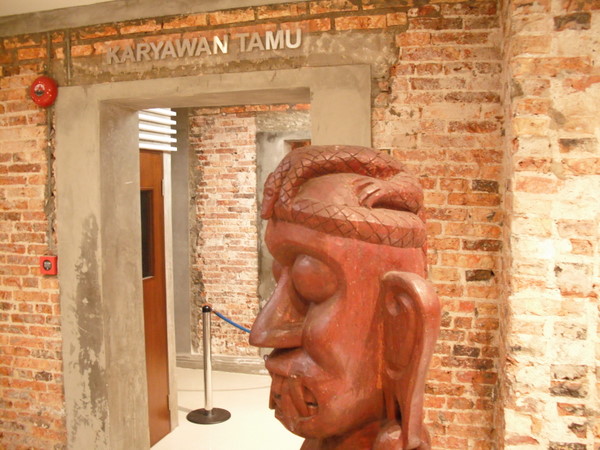Art and aesthetics in Kuching: Museums!
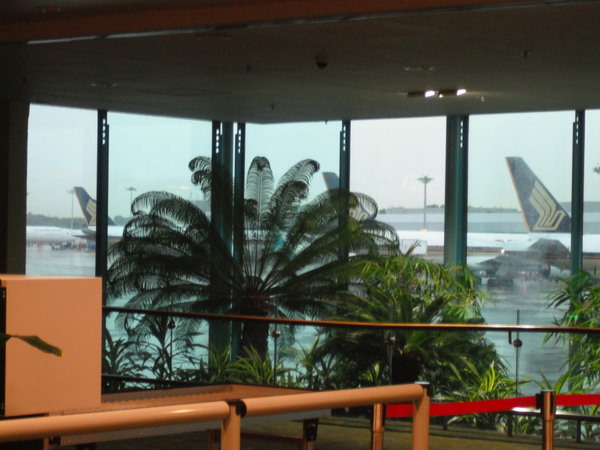 Let’s start at the airport, where you can see this lovely fern. The curving green silhouette is a nice contrast to the usual right-angled gray bleakness of airport architecture.
Let’s start at the airport, where you can see this lovely fern. The curving green silhouette is a nice contrast to the usual right-angled gray bleakness of airport architecture.
And so to the Kuching Museums! Our hotel was right next to the museum complex. I like the exterior of the Natural History Museum of Sarawak – a colonial building surmounted by a giant bug: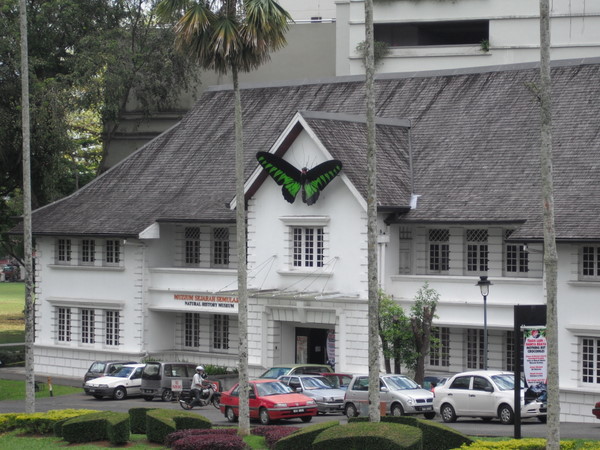 There’s this carved boulder outside the Sarawak Art Museum. So dinosaurian, or water-monitorian – whatever the reptile, it’s distinctly representative, and highly decorative.
There’s this carved boulder outside the Sarawak Art Museum. So dinosaurian, or water-monitorian – whatever the reptile, it’s distinctly representative, and highly decorative.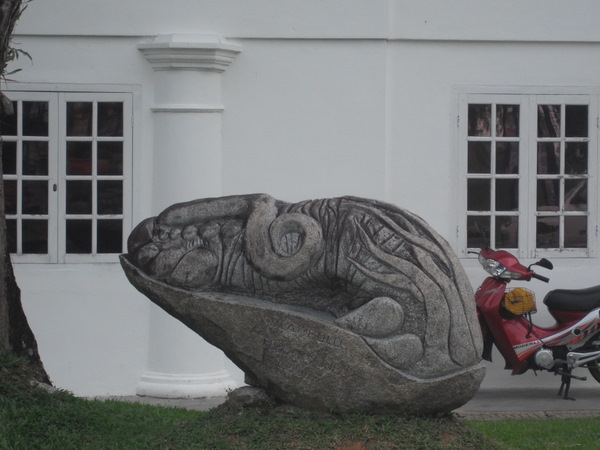 A local artist specializes in some of the ubiquitous materials – soda cans and slices of corrugated iron roofing – to create giant chickens. Here’s a cock-fight:
A local artist specializes in some of the ubiquitous materials – soda cans and slices of corrugated iron roofing – to create giant chickens. Here’s a cock-fight: Carved doors are a good status symbol. Here we have indigenous carving designs, with the later addition of islamic calligraphy.
Carved doors are a good status symbol. Here we have indigenous carving designs, with the later addition of islamic calligraphy. 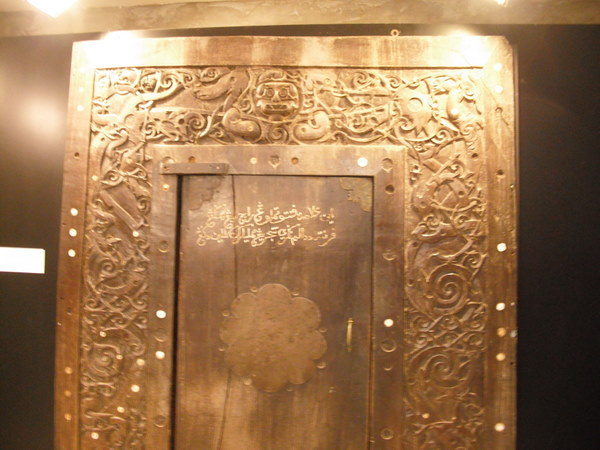
I am very fond of this statue. This fierce man is wearing a pangolin hat.
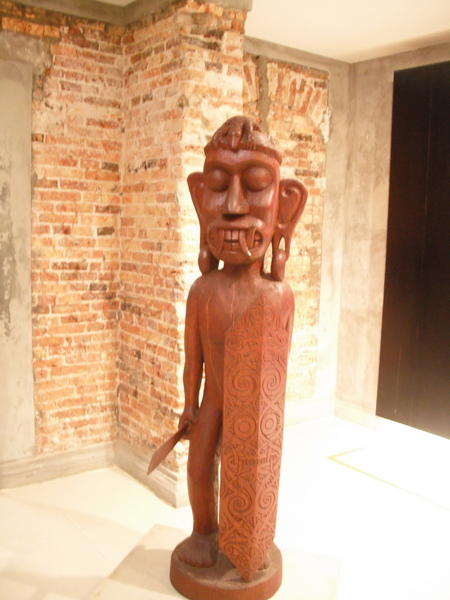
Nearby in another colonial building is the ethnological museum, which has good exhibits on indigenous cultures upstairs, and a lot of stuffed animals downstairs – badly stuffed, and pretty dusty. But the 30-foot python skeleton is impressive. And they have a few lovely touches in museum architecture that remind me of the grand museums of the west. Here’s a nice arched doorway in this colonial building: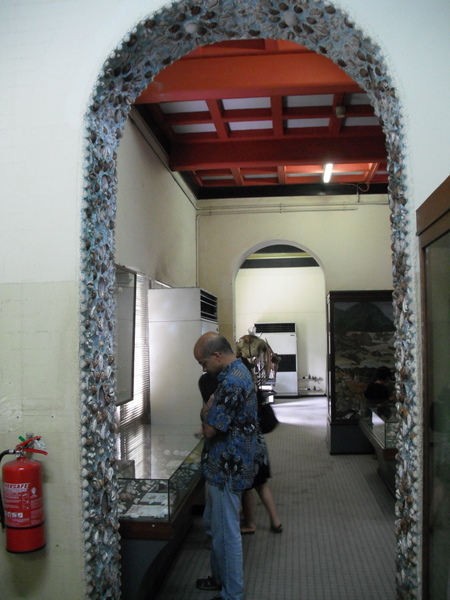 And here’s detail of the artwork around the inside of the arch.
And here’s detail of the artwork around the inside of the arch.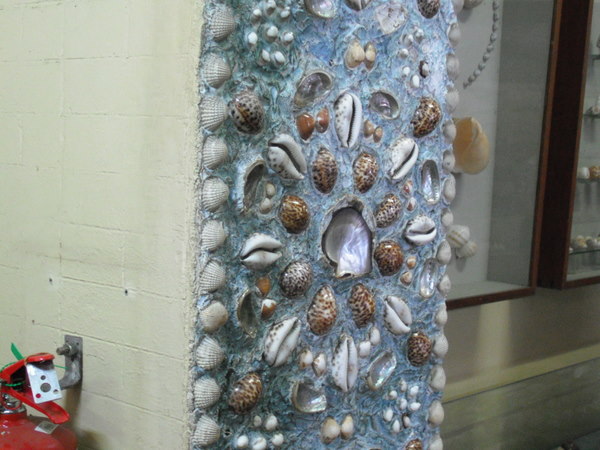
Cross a footbridge over one of the main streets in Kuching and you get to the newest of the Sarawak museums, which has a really good series of exhibits on burial traditions in Borneo among the various populations. Outside there is a huge totem carved from one tree, with a little house on top that would typically have contained ancestral bones.
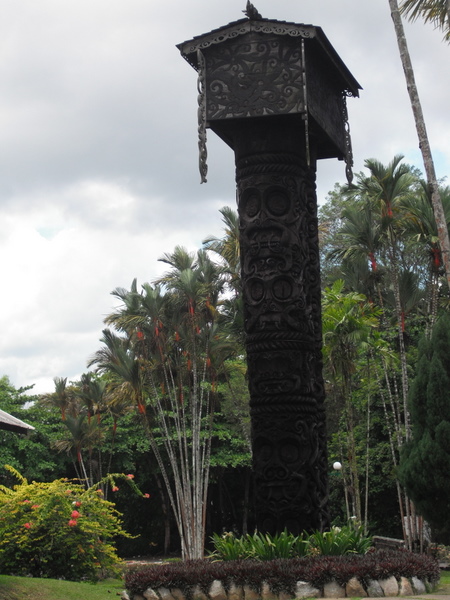
Burial traditions are important because there’s a long tradition of burying ceramics with the dead, and the ceramics are both native and trade items. So they can tell you a lot about local history, which is handy if there’s no extant textual evidence. Trade with India and China has happened in Sarawak for thousands of years. There’s a quite good collection of enormous Chinese decorated urns, and a really terrific exhibit on native pottery traditions. Then there’s a good solid scholarly archeological exhibition, which shows how the nearby caves have yielded pottery shards that provide evidence of rice cultivation about 6000 years ago – perhaps the earliest in southeast Asia. Well, I was excited about this, although the rest of my family found it expedient to hang out in the gift shop reading books for the extra hour that I spent in this area. We emerged with a few goodies from that shop, including a book entitled “Man-Eating Crocodiles of Borneo.” Who could possibly resist?
